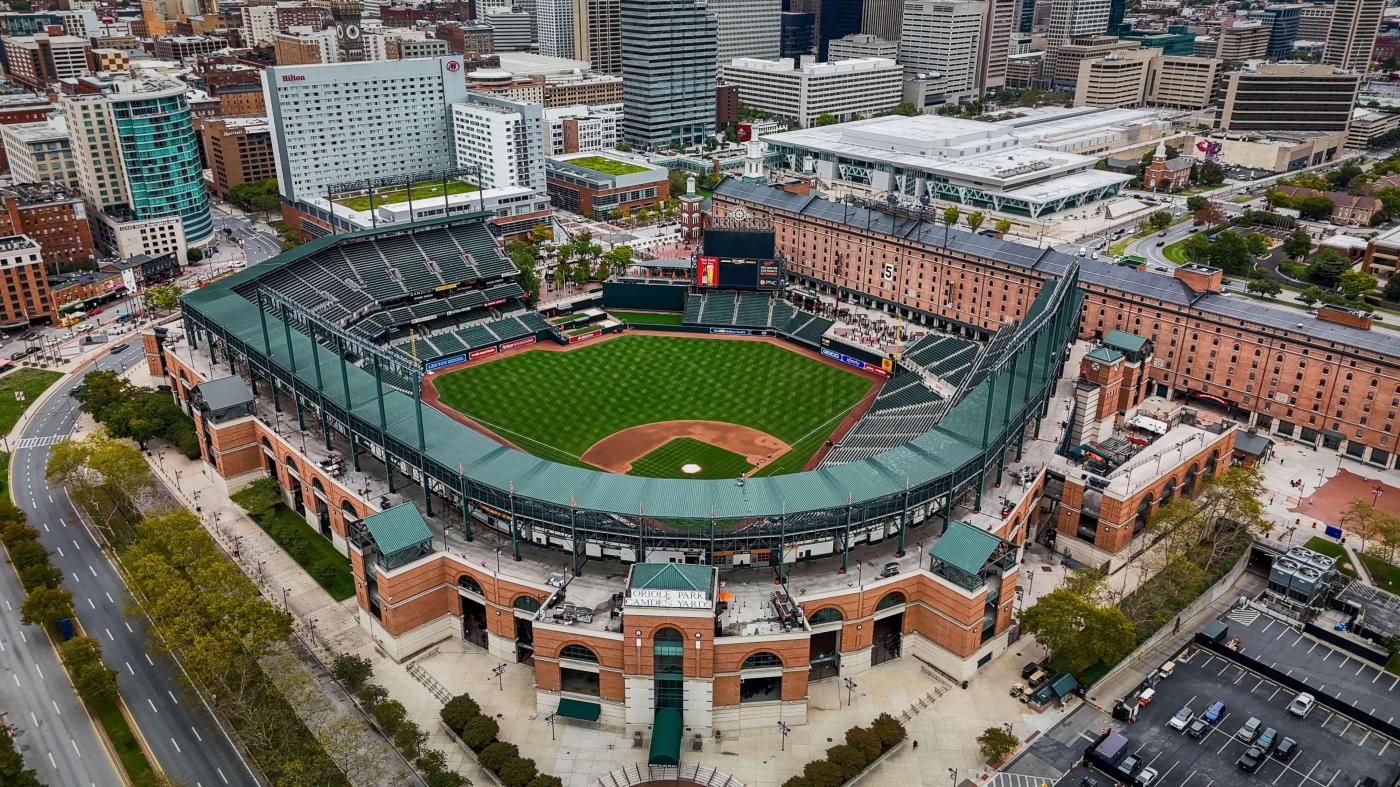
As lease nears end, Orioles and Maryland may consider development rights separately
With their lease expiring in five weeks, the Orioles and the state of Maryland are considering separating the complex — and potentially contentious — issue of stadium-area development rights from the pressing need to finalize a lease binding the team to Baltimore for the long term, according to two people with direct knowledge of the negotiations.
Such an approach would represent a pivot from a nonbinding memorandum of understanding the parties signed Sept. 27 calling for not only keeping the team at Camden Yards for at least 30 more years, but also granting the Orioles rights to develop land around Camden Yards, including the B&O Warehouse and Camden Station.
Moving forward on a lease alone — the parties call it a “facilities use agreement” — could have political and practical advantages for first-year Gov. Wes Moore, allowing him to follow through on his assurances that a binding agreement would be in place before the current two-year lease extension expires Dec. 31.
The two officials, who declined to be named because of the sensitive nature of negotiations, cautioned that the talks remained fluid and that no decision has been made on the proposal.
Developing any portion of Camden Yards is subject to the approval not only of the Maryland Board of Public Works but also of the Legislative Policy Committee, a joint panel in the General Assembly co-chaired by Senate President Bill Ferguson and House Speaker Adrienne A. Jones.
The General Assembly does not convene until Jan. 10.
A lease by itself would be subject to the approval of the Board of Public Works, whose members are Moore, Comptroller Brooke Lierman and Treasurer Dereck Davis. All three are Democrats. Its last meeting of the year is Dec. 13, although a special session could be called after that.
But a lease without development rights would not also require the legislative policy panel’s approval.
Ferguson, a Democrat who represents Camden Yards and the surrounding area, and Lierman have said that while redevelopment in Baltimore is a priority, a lease should be signed first. It would be premature for the state to plan investments around the ballpark, Ferguson said in August, “when we don’t have a partner that is committing to be there for the next 20 to 30 years.”
Lierman declined to comment Monday, spokeswoman Robyne McCullough said.
Ferguson spokesman David Schuhlein reiterated in an interview Monday that the Senate leader continues to believe that “the most important thing is to sign a long-term lease so we can move forward with all the other important items that need to be resolved.”
Broad discussions over a new lease began in 2018, and the failure to reach a binding agreement has some fans worrying about losing the team to another city, as Baltimore did when the NFL’s Colts moved to Indianapolis in 1984. Orioles Chairman and CEO John Angelos has pledged that the team won’t move.
The two officials with knowledge of the private talks told The Baltimore Sun that the negotiations have produced a number of possible scenarios, including the one to split development rights from the lease and another to aid Maryland Stadium Authority employees who could lose their jobs as the result of changes outlined in the memorandum of understanding. Discussions are continuing.
Angelos and spokespersons for the stadium authority and the governor did not return messages seeking comment Monday.
Angelos has long said a new lease presents an opportunity to redevelop the area around the stadium, attracting people even on non-game days.
In a letter to the editor published Nov. 2 in The Sun, Thomas Kelso, the stadium authority chairman from 2015 until March, questioned whether the state would get adequate value from the development deal, under which the Orioles would pay $94 million in rent over 99 years.
Under the memorandum, the Orioles also would cease paying rent to the state for Camden Yards but would assume responsibility for stadium operations and management. That’s similar, though not identical, to the arrangement the stadium authority has with the with the NFL’s Ravens, who have made major upgrades to neighboring M&T Bank Stadium in recent years.
Such a switch — if it were included in the lease or a later agreement — could mean an unknown number of stadium authority workers would be laid off.
The memorandum says the Orioles would work with the state to make significant efforts “to hire, contract with, or relocate” any employees whose jobs were lost in the switch.
Among the proposals being floated in the talks is one in which the workers would retain their stadium authority employment, and presumably health and retirement benefits, and continue to perform stadium repairs and other duties as Orioles contract employees, the two officials said.
The memorandum does not say how many workers might be affected, and estimates have ranged widely from 10 to around 30.
()

